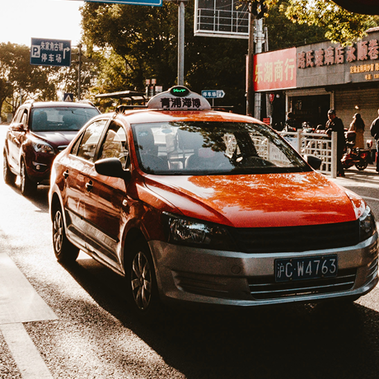This article first appeared in GC Ticker on September 2020.
The COVID-19 pandemic struck China’s passenger vehicle industry at a time when sales and margins were already going down. Despite a seemingly quick market recovery starting in April 2020, the long-term impact of COVID-19 and additional challenges require automotive companies to develop new strategies and to implement fundamental structural shifts immediately.
The lockdown in the first quarter of 2020 led to a major collapse in passenger vehicle demand in China, resulting in one of the bleakest sales periods in the past decade. According to the China Association of Automobile Manufacturers and other sources, January sales figures were down 20 percent, February down over 80 percent, and March down nearly 50 percent, compared to the respective months in 2019. Starting in April 2020, the market has seen a strong recovery, showing sales figures nearing those of the previous year. However, this positive development should be taken with a grain of salt: the strong numbers in the second quarter of 2020 are, in part, compensation for the sales dive in the first quarter. Aggressive sales promotions, including special shopping days arranged by local governments, incentivized automakers and customers, while dealers also rebuilt their stocks.
Lower Vehicle Demand for the Year(s) to Come
That said, the COVID-19 pandemic continues to affect local and global markets. Until an effective vaccine or treatment is developed, sporadic outbreaks are to be expected. The spike in infections in Beijing in June 2020, though swiftly controlled, is a salutary reminder of this reality. Consequently, the volatile nature of the current economy leaves many consumers and companies concerned about the future, with the risk of many canceling or postponing planned new vehicle purchases. As a result, vehicle demand over the foreseeable future could be lower than expected before the start of the pandemic, and demand fluctuations may be high.
However, the pandemic is not the only factor to affect demand: automotive companies have been facing numerous challenges, some of which have existed for some time. Passenger vehicle sales in China had been slowing well before COVID-19, with monthly factory shipments of passenger cars declining year-on-year since July 2018. This was due to a variety of reasons, including market saturation in some areas, as well as improving alternatives to car ownership: hugely popular mobility services like ride-hailing and the development of efficient subway and long-distance railway systems have supported this trend.
After passenger vehicle sales of 24.7 million in 2017 in China, 23.7 million in 2018, and 21.4 million in 2019, we expect sales for the current year in the region of 18.5 to 19.5 million, assuming no further lockdowns will be imposed. Considering the above-mentioned challenges, significantly higher sales numbers are hard to imagine in the next few years – unless automotive companies and the government make bold strategic decisions now.
Diminishing Profit Margins
Decreasing margins is another major challenge in the Chinese automotive industry. Costs have been steadily creeping up on automakers. For example, material costs - the most important cost factor of practically all automotive companies - have recently seen a steep increase. Key reasons for this include the integration of new and improved vehicle features and technologies, as well as the need to comply with tightening government regulation. Labor and land costs have been on the rise as well. Concurrently, on the sales side, overcapacities in the market have caused price erosion for some time.
The Evolution of Chinese Customers
We also need to consider the shift in customer structure and demand preferences. A key trend is the growing importance of sales to companies and organizations. As an example, the rental and fleet segments could grow to 18-20 percent of total sales in China by 2025. With this growth, fleet customers are gaining bargaining power to increasingly shape the development of features and functionalities they desire. Some bigger players, such as large-scale mobility companies, even think about whether to sell vehicles to consumers through their own platforms. Retail sales are also affected by changing customer profiles. The next generation of young adults, for example, tends to be more individualistic than its predecessors. They prefer niche and differentiated products rather than viewing cars as a status symbol.
Technological Shifts Require Funds
Together, the triangle of market, customer, and cost trends is leading to lower vehicle sales and declining profit margins. This comes at a time when the automotive industry needs huge funds to finance technological shifts, especially for the development of electric vehicles, autonomous driving, and automotive software. In today’s economic climate, practically no carmaker can afford not to invest in tech.
On the other hand, it is not at all clear whether the investments will pay off. For example, the fact that China has the largest electric vehicle car park in the world does not mean that selling electric vehicles has led - or will lead - to superior returns for automakers in China. Besides, the relatively high sales numbers in this segment are still not primarily driven by delivering superior customer value, but rather through government incentives, which will most likely be discontinued at some point in time.
Chinese customers have a higher willingness to buy vehicles online, compared to consumers in other countries
New Strategies and Structural Shifts
Now is the time for automotive companies operating in China to make bold decisions on future strategies. Although every company is unique and must define actions in accordance with its specific situation, there are several key strategies relevant to many automakers in China.
- Fully understand changing customer requirements and master demand forecasting
The times of highly profitable growth in China have been replaced with lower demand, overcapacities, and more sophisticated customers. To cope, automotive companies should invest in better understanding the changing customer requirements and adapting their sales approach and organization accordingly. This includes marketing and sales strategy on the B2B side to respond to the growing power of larger fleet customers. On the B2C side, however, automotive companies must cope with new retail channels, while reforming traditional sales channels. For example, Chinese customers have a higher willingness to buy vehicles online, compared to consumers in other countries. This changes the roles and responsibilities of conventional dealers, with automakers having to accommodate retail store concepts and online sales platforms. For both B2B and B2C, developing accurate demand forecasting skills using the latest analytics will be a key success factor in the future. - Modify product offering balancing customer value and cost
Until recently, most vehicles offered in China were similar to the ones provided in other parts of the world. Some vehicles had a limited number of China-specific adaptations, but the overall vehicle architecture, its features, and detailed technical realization were the result of a global concept.
Given the current changes in the Chinese market and its consumers, it will be important to thoroughly review the product offering: Which functions and features are really needed for Chinese customers? Which existing ones can be omitted, and which new ones will be crucial for future market success? To balance material and development costs with revenues and margins, it will be crucial to test new approaches early-on in the product development process, with potential customers. Applying advanced consumer research techniques should be a major prerequisite for fast and efficient market testing. Product development and sales need to collaborate even more closely than in the past. - Take operational excellence and cost management to the next level
Automotive companies in China have done a tremendous job in resuming operations after the lockdown. Many measures have been introduced to enable production under new hygiene restrictions. However, production processes, equipment, and layout have gone largely untouched in the hope that the pandemic will soon pass. As a result, efficiency and productivity have suffered a blow, while capacity utilization has become quite low for many companies. As it becomes clear that COVID-19 is here to stay, many companies have to reduce resources and capacities. Besides adapting capacities on a site and company level, partnering and outsourcing may be fostered as well, given the high overcapacities in the Chinese automotive sector.
In addition, production processes, equipment, layout, and the entire production system need to be aligned to the new volumes and hygiene restrictions. Companies must check which automation and digitalization tools can be utilized to combine efficiency improvement with social distancing: specific examples include digital quality control, automated in-plant transportation, preventive maintenance, and digital shop floor management. High-performing networks play a crucial role in the implementation of such tools, and automotive companies may need to speed up their 5G strategies.
As more fluctuations in demand can be expected, companies may put more emphasis on achieving higher degrees of flexibility. This can relate to products, volumes, or processes. More specifically, companies must be able to smoothly produce a variety of different vehicles and parts. Being able to quickly adapt production to changing volumes, and to launch new vehicles in the best possible way, will be key for gaining a competitive edge in the future.
Another interesting strategic direction is the shift of production from locations with high labor and land costs, such as the areas around Shanghai, Beijing, and Guangzhou, to lowercost sites in the less developed regions of China. The government’s interest in encouraging the economic development of these regions to counter the slowdown of export-led growth provides a further impetus to evaluating this option. - Review organizational and ownership setups
ver the past few years, many automotive companies operating in China have built up large, complex organizations with many production sites. Considering the new business environment, the company structure needs to be reviewed, simplified, and consolidated. Many companies could benefit from improving the ownership setup: regulatory changes have made it easier for foreign automotive carmakers to change shareholders, roles, and responsibilities in existing joint ventures, or to establish new joint ventures or wholly foreignowned enterprises.
All in all, these are challenging times for the automotive industry. On the positive side, however, companies can leverage multiple strategies to make use of the many opportunities available today. By fully understanding current and future options and by taking bold decisions with rigorous implementation, companies can now set the foundation for business success in the years to come. - Modify product offering balancing customer value and cost
Until recently, most vehicles offered in China were similar to the ones provided in other parts of the world. Some vehicles had a limited number of China-specific adaptations, but the overall vehicle architecture, its features, and detailed technical realization were the result of a global concept. Given the current changes in the Chinese market and its consumers, it will be important to thoroughly review the product offering: Which functions and features are really needed for Chinese customers? Which existing ones can be omitted, and which new ones will be crucial for future market success? To balance material and development costs with revenues and margins, it will be crucial to test new approaches early-on in the product development process, with potential customers. Applying advanced consumer research techniques should be a major prerequisite for fast and efficient market testing. Product development and sales need to collaborate even more closely than in the past. - Take operational excellence and cost management to the next level
Automotive companies in China have done a tremendous job in resuming operations after the lockdown. Many measures have been introduced to enable production under new hygiene restrictions. However, production processes, equipment, and layout have gone largely untouched in the hope that the pandemic will soon pass. As a result, efficiency and productivity have suffered a blow, while capacity utilization has become quite low for many companies. As it becomes clear that COVID-19 is here to stay, many companies have to reduce resources and capacities. Besides adapting capacities on a site and company level, partnering and outsourcing may be fostered as well, given the high overcapacities in the Chinese automotive sector.
In addition, production processes, equipment, layout, and the entire production system need to be aligned to the new volumes and hygiene restrictions. Companies must check which automation and digitalization tools can be utilized to combine efficiency improvement with social distancing: specific examples include digital quality control, automated in-plant transportation, preventive maintenance, and digital shop floor management. High-performing networks play a crucial role in the implementation of such tools, and automotive companies may need to speed up their 5G strategies.
As more fluctuations in demand can be expected, companies may put more emphasis on achieving higher degrees of flexibility. This can relate to products, volumes, or processes. More specifically, companies must be able to smoothly produce a variety of different vehicles and parts. Being able to quickly adapt production to changing volumes, and to launch new vehicles in the best possible way, will be key for gaining a competitive edge in the future.
Another interesting strategic direction is the shift of production from locations with high labor and land costs, such as the areas around Shanghai, Beijing, and Guangzhou, to lowercost sites in the less developed regions of China. The government’s interest in encouraging the economic development of these regions to counter the slowdown of export-led growth provides a further impetus to evaluating this option. - Review organizational and ownership setups
Over the past few years, many automotive companies operating in China have built up large, complex organizations with many production sites. Considering the new business environment, the company structure needs to be reviewed, simplified, and consolidated. Many companies could benefit from improving the ownership setup: regulatory changes have made it easier for foreign automotive carmakers to change shareholders, roles, and responsibilities in existing joint ventures, or to establish new joint ventures or wholly foreignowned enterprises.
All in all, these are challenging times for the automotive industry. On the positive side, however, companies can leverage multiple strategies to make use of the many opportunities available today. By fully understanding current and future options and by taking bold decisions with rigorous implementation, companies can now set the foundation for business success in the years to come.



